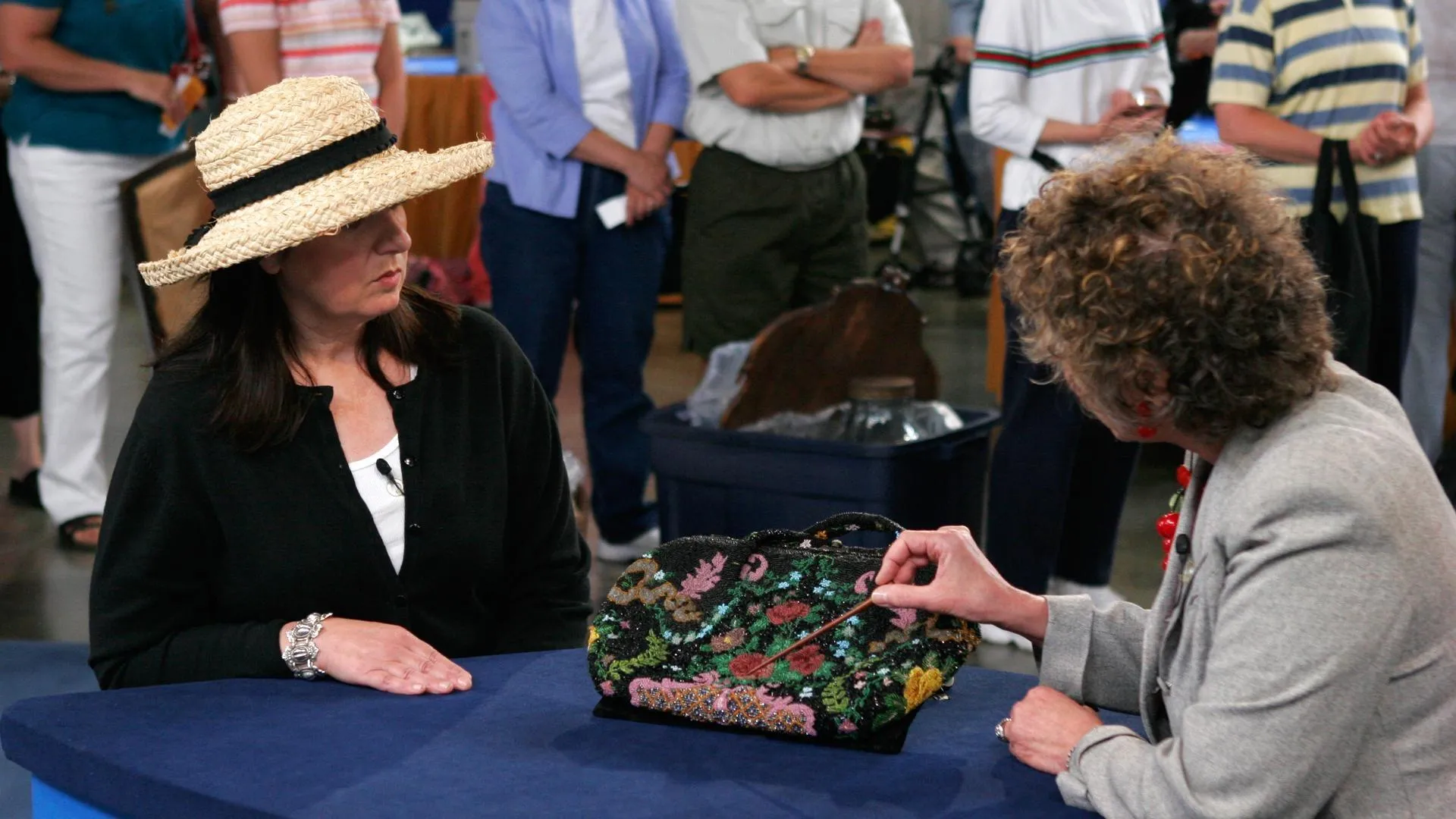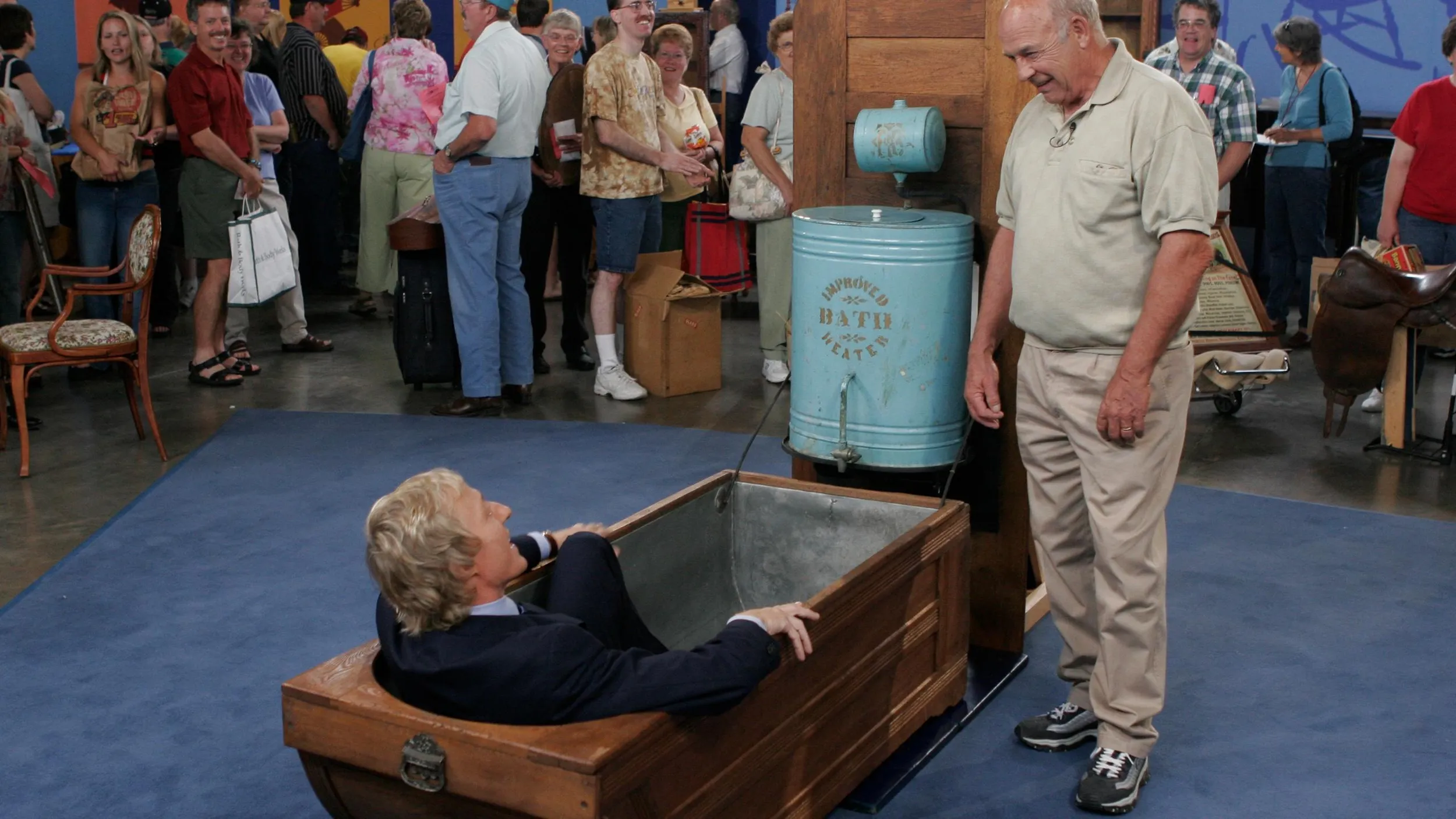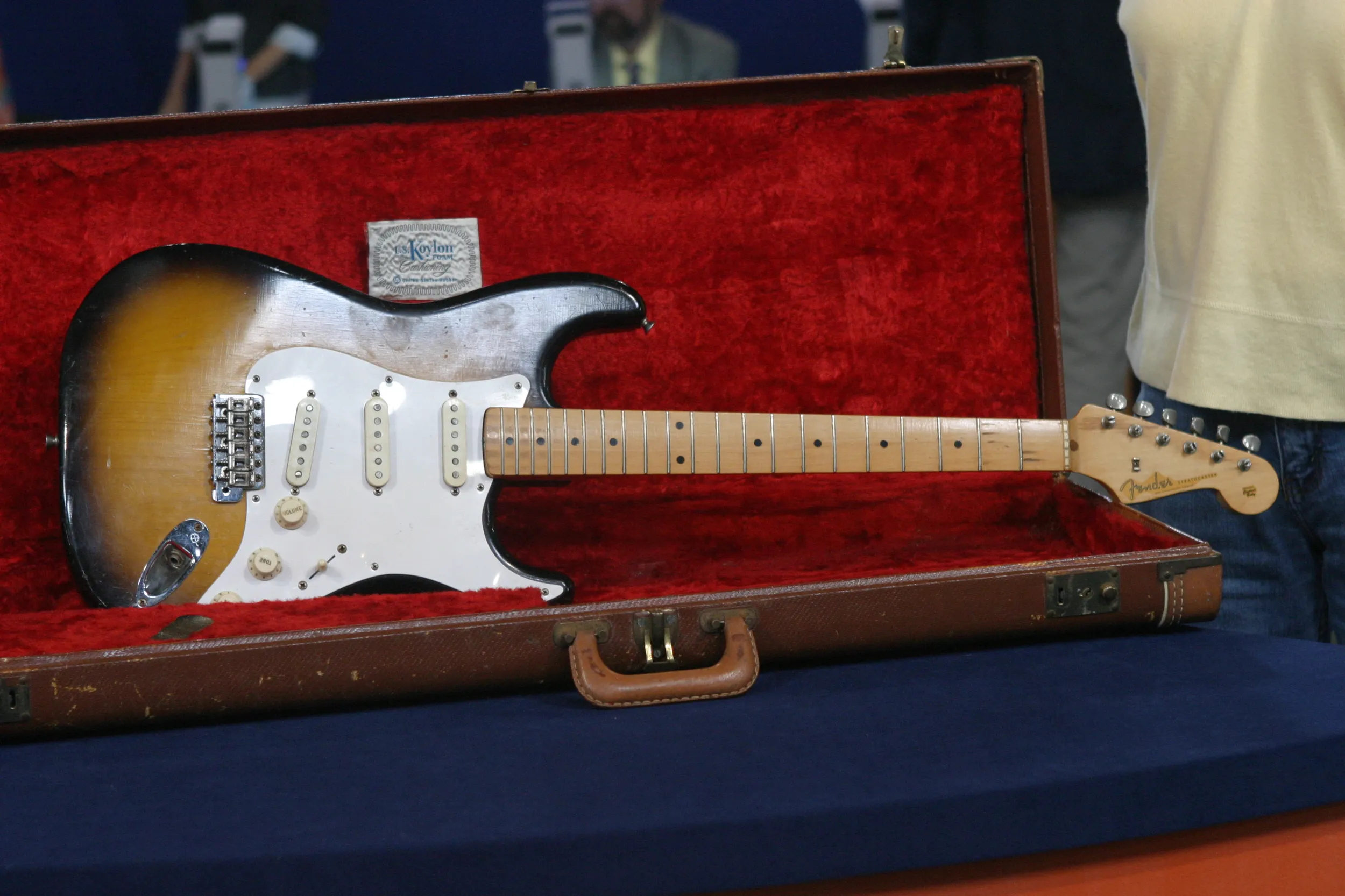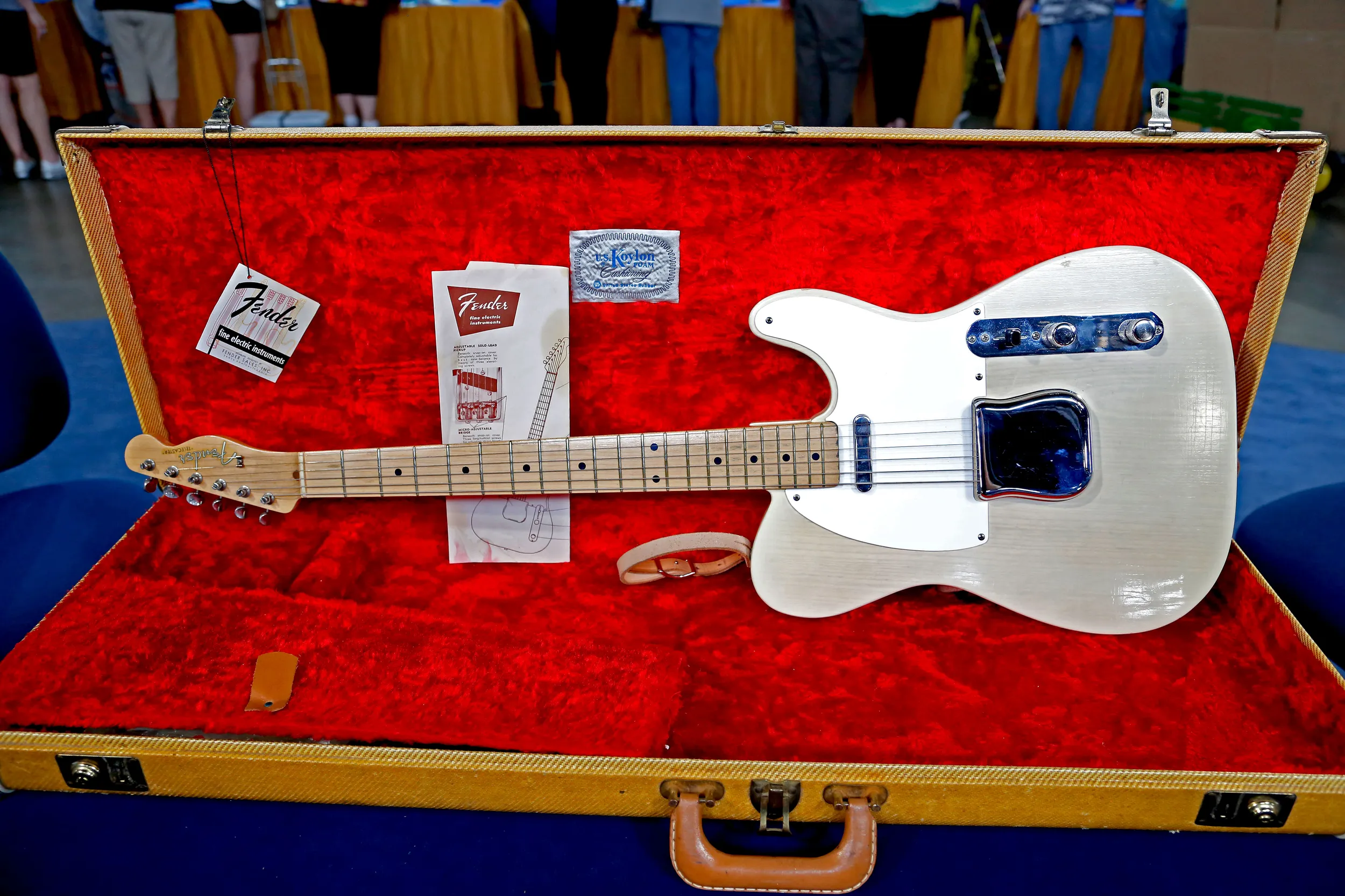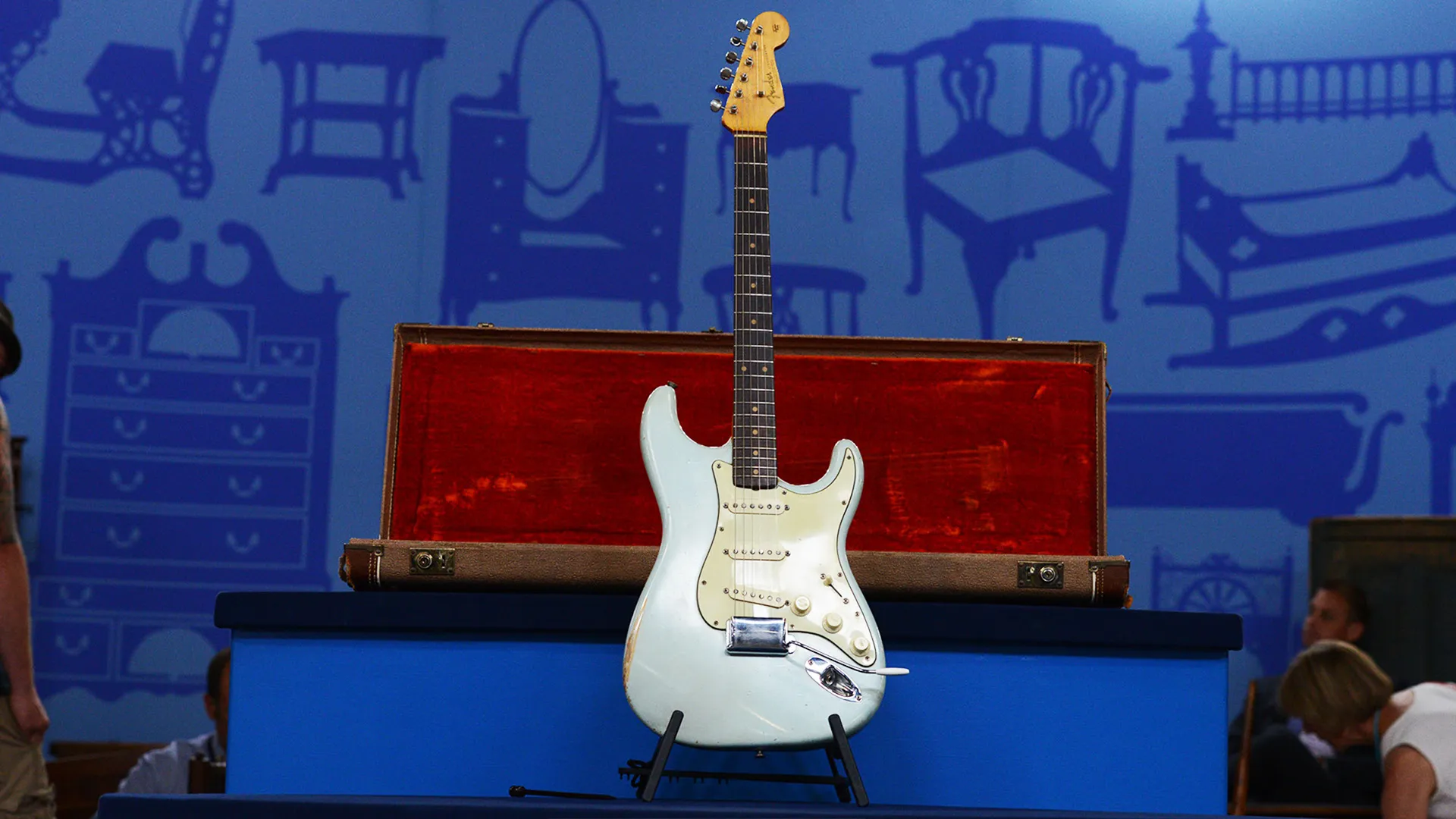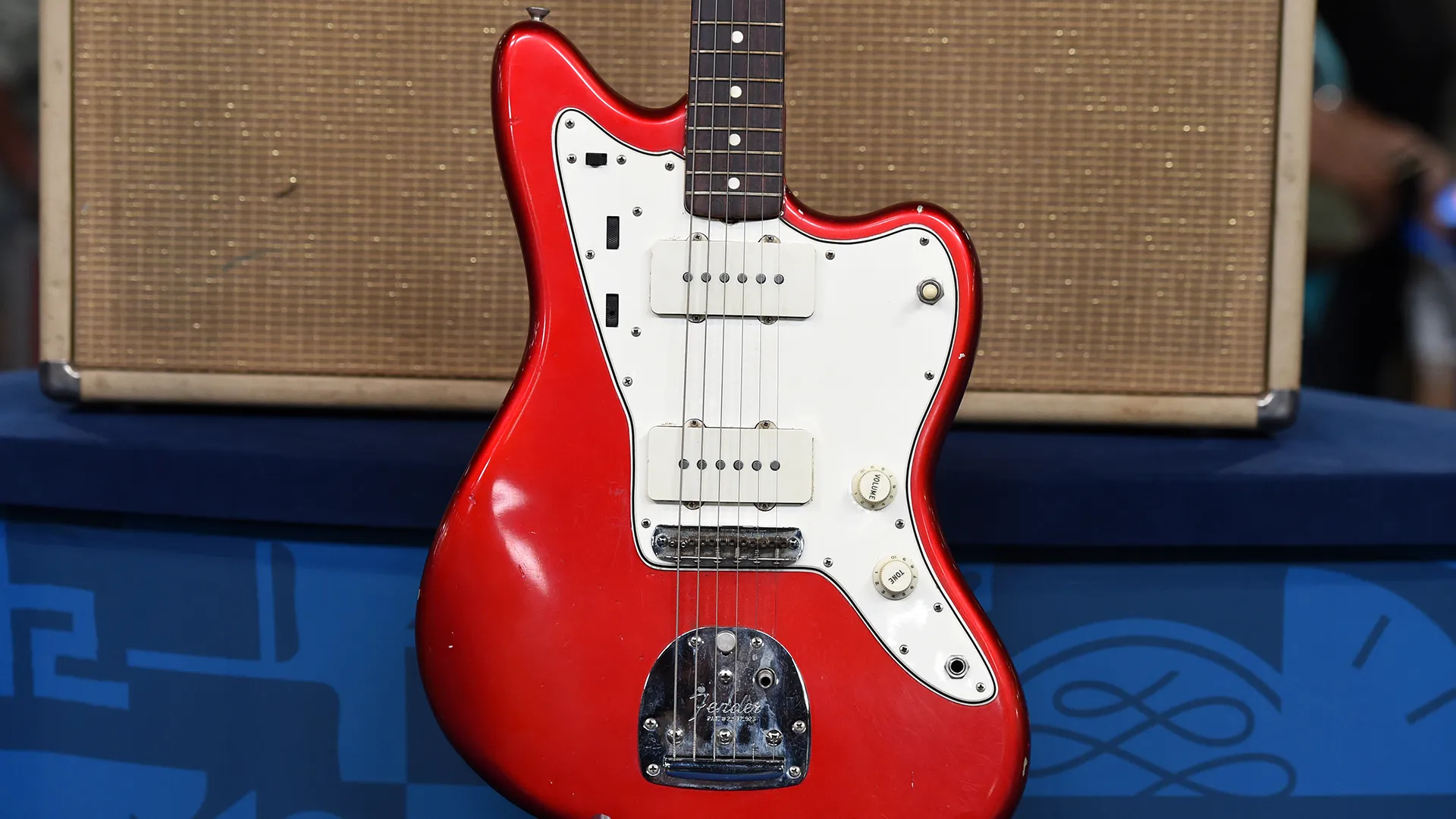GUEST: This belongs to my husband now. It belonged to his grandfather, who bought it new. And when he passed away, his wife gave it to my husband, because he was the only member of the family that knew how to play. We pulled out a couple of sheets of church music and a few pamphlets from a youth revival that he had played for. And when his friends would come, they'd have a few drinks and sit around and play guitars.
APPRAISER: Great. You've brought in a Fender Stratocaster guitar, and, and without a doubt, one of the most coveted solid-body guitars made today.
GUEST: Yeah.
APPRAISER: It's what Eric Clapton called "a pure rock 'n' roll machine." You've got an original case with it. That first sort of line of inquiry is, of course, the serial number on the back plate of the guitar. Though these are sometimes off by a year or so, and the true way to really date the guitar would be to pull the neck out and to read what might be either penciled or stamped here at the end of the fingerboard. We're going to go somewhere where no one else has ever been, and ask your permission-- if you're comfortable with that.
GUEST: Yep. That's fine.
APPRAISER: Yeah, all right, well...
GUEST: I'm looking forward to it.
APPRAISER: With mass-produced items like Fender guitars, they're made of component parts, and one of the geniuses of Leo Fender's inventions was to bolt the neck on...
GUEST: Yeah.
APPRAISER: With four very simple bolts and a neck plate. It makes removing these extremely simple, and at the same time, it made for a very easy repair. From the feel of it, I don't think that it's ever been pulled apart before. Has anyone, to your knowledge?
GUEST: No, as far as I know, nothing's been done beyond, you know, string-changing.
APPRAISER: We're pulling... Yeah, that's a great feel. That's the kind of tension you want to feel on a screw that hasn't been cracked before. And we pull the neck plate off, and a little bit of sort of gassing of the, of the lacquer underneath. You can see this cloud it made. And there's the nitrocized ... lacquer sticking on the back plate, which is quite wonderful. And then a quick little... (clicks) Nice sound.
GUEST: (laughs)
APPRAISER: And we have here a very interesting thing. No date at all. Now, there is rumor at times that they weren't always consistent in putting in neck dates. And it doesn't worry me that there's not a penciled-in date at the end of this neck. It's a well-known fact that between 1959 and 1960, Fender dispensed with writing in these dates. Why? Well, there happened to be an employee writing profanity at the end of this... these necks. Leo Fender got word of it. He said we're going to go to a rubber stamp, which they did in about 1961. And looking at this guitar closely, at the pickups, at the knob controls, the quality of the varnish... Without a neck date, I still think we're looking at 1959, and I think we're going to hang our hat on this.
GUEST: On the serial number?
APPRAISER: And the quality of how this is cracked, pulled out, and the fact that it's all very fresh in here. An outfit like this is quite amazing to survive in this kind of condition for such a long period of time. The amp is also from 1959. Inside, on the label, there is a production order number. It is I.E.: "I" standing for the date, 1959, and "E" for the month of May. Were you offered a price for this guitar at one point?
GUEST: We were.
APPRAISER: And how much were you offered?
GUEST: $15,000.
APPRAISER: A fair market value for this complete outfit would be easily $25,000.
GUEST: Wow.
APPRAISER: Well, thank you for bringing it in.
GUEST: Thank you for looking it over and telling us. It's pretty cool information.
APPRAISER: Terrific.

